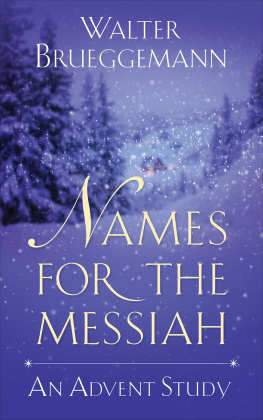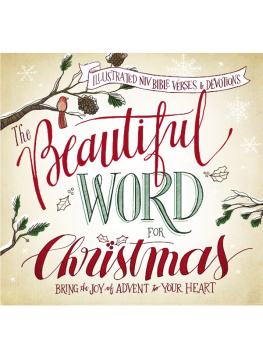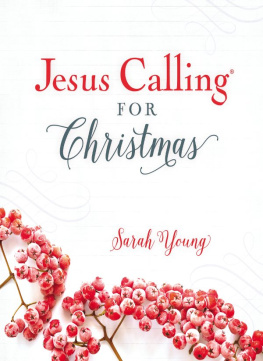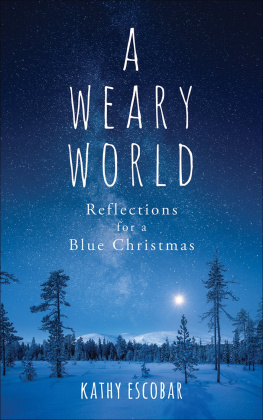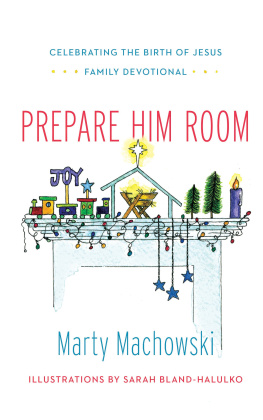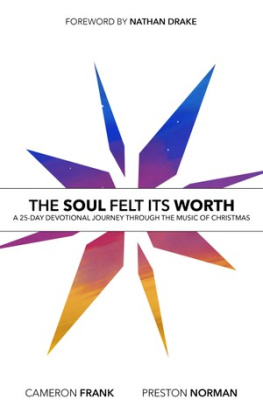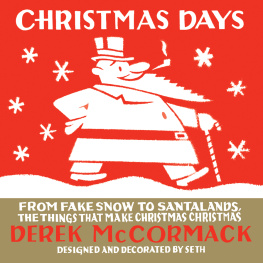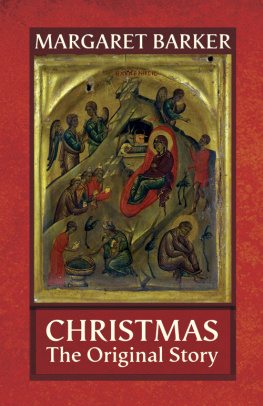CHRISTMAS IN THE
FOUR GOSPEL HOMES
CHRISTMAS IN THE
FOUR GOSPEL HOMES
An Advent Study
C YNTHIA M. C AMPBELL
WITH ILLUSTRATIONS BY K EVIN B URNS

2019 Westminster John Knox Press
Illustrations 2017 Kevin Burns
Portions of this book were previously published as a downloadable study titled Christmas Accounts in the Gospels: An Adult Advent Study, The Thoughtful Christian, 2017, www.TheThoughtfulChristian.com.
First edition
Published by Westminster John Knox Press
Louisville, Kentucky
22 23 24 25 26 27 2810 9 8 7 6 5 4 3 2
All rights reserved. No part of this book may be reproduced or transmitted in any form or by any means, electronic or mechanical, including photocopying, recording, or by any information storage or retrieval system, without permission in writing from the publisher. For information, address Westminster John Knox Press, 100 Witherspoon Street, Louisville, Kentucky 40202-1396. Or contact us online at www.wjkbooks.com.
Scripture quotations from the New Revised Standard Version of the Bible are copyright 1989 by the Division of Christian Education of the National Council of the Churches of Christ in the U.S.A. and are used by permission.
Book design by Erika Lundbom-Krift
Cover design by Mary Ann Smith
Library of Congress Cataloging-in-Publication Data
Names: Campbell, Cynthia McCall, author.
Title: Christmas in the four Gospel homes : an Advent study / Cynthia M. Campbell.
Description: Louisville, KY : Westminster John Knox Press, [2019] | Identifiers: LCCN 2019018113 (print) | LCCN 2019021848 (ebook) | ISBN 9781611649680 (ebk.) | ISBN 9780664264994 (pbk. : alk. paper)
Subjects: LCSH: Jesus ChristNativity.Biblical teaching. | ChristmasBiblical teaching. | Infancy narratives (Gospels)
Classification: LCC BT315.3 (ebook) | LCC BT315.3 .C36 2019 (print) | DDC 242/.33dc23
LC record available at https://lccn.loc.gov/2019018113
Most Westminster John Knox Press books are available at special quantity discounts when purchased in bulk by corporations, organizations, and special-interest groups. For more information, please e-mail
To the congregation of Highland Presbyterian Church
for their love, support, and partnership in ministry
CONTENTS
O NCE AGAIN, WE ARE PUTTING UP THE DECORATIONS; we are singing carols and buying gifts. Once again, it is Advent. In these days between Thanksgiving and New Years, many of us visit other peoples homes. We may drop in for coffee or be invited to an open house. Some spend several days with relatives who live out of town. When we do this, it is always so interesting to see other peoples homeshow they decorate, what kinds of things they cherish, how their styles mesh with their personalities. Tom Long, distinguished professor of preaching, has compared the churchs lectionary (the three-year cycle of Sunday readings) to homes that the church goes to visit. The first year, the Gospel readings take us to Matthews house; then we move on to Mark; finally, we visit Luke. Every year, on special occasions (notably in the season of Easter and some other special days) we go to visit John. Just like our own homes, each gospel house is quite differentdecor and ambience reflect the family that lives there and their individual traditions. Some are cluttered; others are spare. Some are decorated within an inch of their lives; others are haphazard. We each like some more than others, but moving around allows us to savor the same things from different perspectives.
Some years ago, Jon Walton, then pastor of The First Presbyterian Church in the City of New York, used this idea as the basis for a sermon series during Advent. Building on his idea, I invite you on a journey to visit our four Gospel homes. The purpose of our journey is to experience what Christmas means from that perspective and how Christmas is celebrated there. Each chapter of this book is accompanied by a drawing of a house, the design of which is suggested by the shape and character of the Gospel. These drawings originally appeared on the cover of the Sunday bulletin when these chapters were preached as sermons. They are the creation of Kevin Burns, who has written his own interpretations of the Gospel home that welcomes us. Burns is an architect by profession and a deeply knowledgeable Bible teacher. I am deeply grateful to Kevin for making these theological reflections find visual expression. We hope that pondering each of the illustrations will draw you more deeply into this journey as we reflect on the mystery of Jesus, Son of God, born of Mary.
This book is for individual or group study. It includes prayers and questions for reflection for each chapter near the end of the book. Readers can respond in writing in the space given. Finally, the book concludes with suggestions for leading a group study. I am grateful to Martha Bettis Gee for providing the original version of this guide and to David Maxwell for his valuable contributions in editing this material.
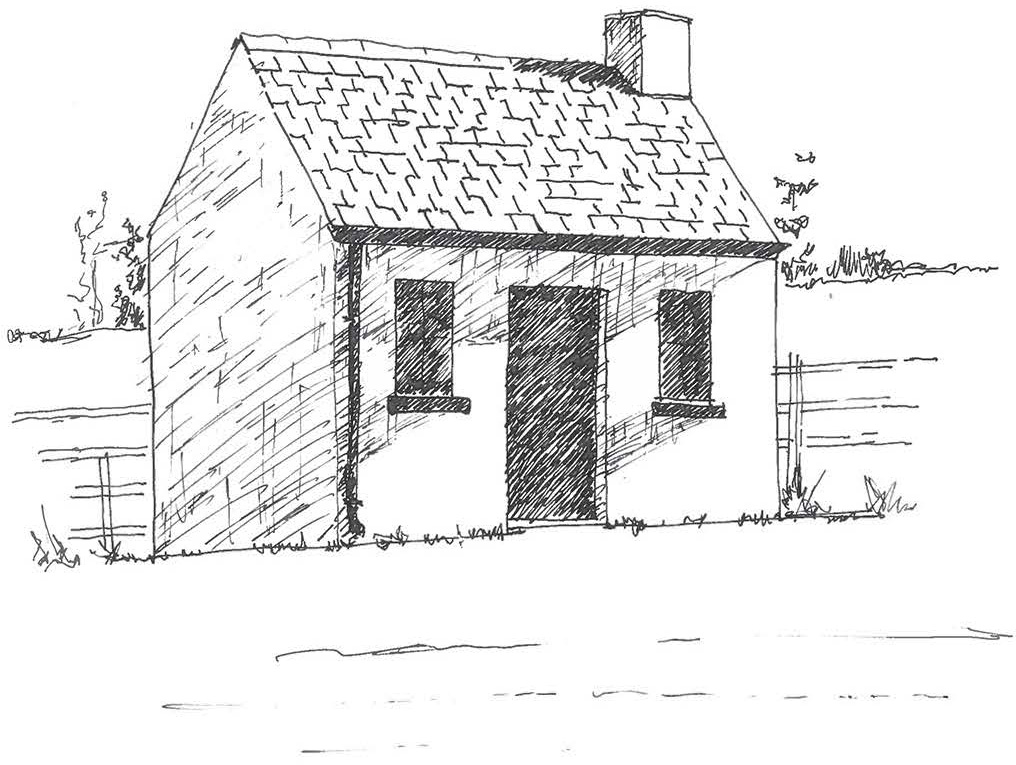
CHRISTMAS AT
MARKS HOUSE
Mark 1:111
W E BEGIN BY GOING TO VISIT C OUSIN M ARK . He lives in a spare, simple home, because Mark is kind of like the police detective who says, Just the facts, maam. His house has just what it needs and not much more: a door, a couple of windows, a chimney. The surprising thing is that there isnt much in the way of Christmas going on here. There are no decorations to speak of, not a lot that makes us think of holiday cheer. As far as we know, Mark is the first of these writings that we call Gospels, and we call them that largely because of how Mark starts: The beginning of the good news [that is, the gospel] of Jesus Christ, the Son of God. Its an odd way to start, dont you think? I mean, why would you announce the beginning of something that the reader knows is the beginning? It would be like starting a sermon by saying, Now I am starting my sermon for Advent, week one. Well, obviously.
Perhaps Mark means something else by beginning. Where does the Gospel begin? How does this whole thing get launched? According to Mark, it starts with John the Baptist. In the ancient world, the arrival of the monarch required a herald. The herald (or messenger) was the press release or the Facebook post or the tweet of the ancient world. Back then, a guy was sent into the city to say, Heads upmonarch sighting! Sweep the streets and clean up your act! The good news begins with the messenger, and the message is, Prepare the way of the Lord, make his paths straight. Out in the wilderness, at the edge of civilization, in a sort-of-scary liminal space, John is calling out for people to repent, to change their hearts and lives.
Baptism was the sign John offered people to signify their desire to prepare for the new thing John believed God was doing. Washed in the water of the River Jordan, the people were ready to start their lives with God anew. Some scholars suggest that this act of going through this water was to remind people of how God led their ancestors out of slavery and into freedom by passing through the water of the Red Sea. Among those who came to John was Jesus from Nazareth. When he came up from the water, Mark says, he saw the heavens torn open and the Spirit of God coming down like a dove. And he heard a voice saying to him, You are my Beloved, my Son, my Child. Then that same Spirit drove Jesus deeper into the wilderness, where he fasted and prayed for forty days. His faith, his understanding of God, and his very identity were tested. When he returned to Galilee, he began to say, The reign of God has come near. Jesus called a few followers and began a ministry of teaching and healing. By the end of chapter 1, Jesus is surrounded by crowds eager to hear his message. They are anxious, as well, for healing. For Mark, Jesus acts of healing arent just miracles; they are demonstrations of power. They point to the end of this Gospel and the truly good news that God is more powerful than suffering and death.
Next page
